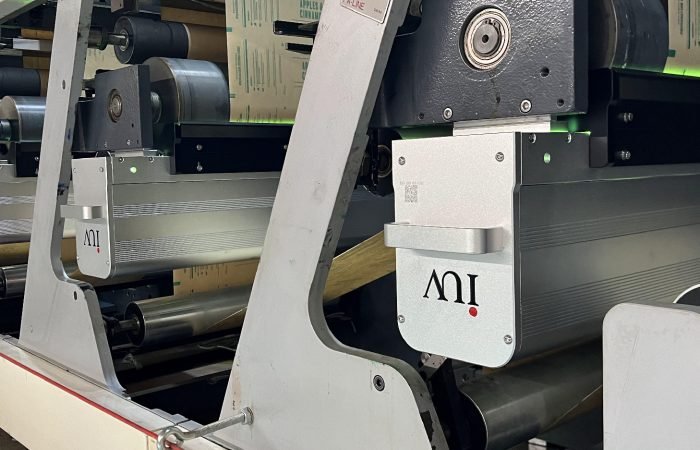Upgrading your flexographic press with an LED curing system offers significant advantages. This technology is revolutionizing narrow web printing. You can achieve faster print speeds and improved print quality. The switch to LED UV curing is more than just a modernization. It’s a strategic move to enhance your operational efficiency and reduce your environmental impact. Many printers are exploring this upgrade. Understanding the process is key to a successful transition.
Flexographic printing, often called flexo, is a versatile printing method. It uses flexible printing plates to transfer ink. This makes it ideal for printing on a wide range of materials. Think about packaging, labels, and other flexible substrates. Narrow web flexo presses are designed for smaller print jobs. Labels and flexible packaging are common applications. These presses demand efficient and reliable curing solutions. Traditional UV curing systems have been the standard. However, LED UV curing presents a compelling alternative.
LED UV curing technology utilizes light-emitting diodes. These diodes emit UV light at specific wavelengths. This light initiates a photochemical reaction. The ink or coating then cures, or hardens, almost instantly. This process is different from traditional mercury lamp UV curing. Mercury lamps emit UV light across a broad spectrum. They also generate substantial heat. LED systems are more targeted. They focus on the wavelengths that initiate curing. This precision leads to several benefits.
One of the primary benefits of LED UV curing is energy efficiency. LEDs consume significantly less power than mercury lamps. This translates directly into lower electricity bills for your printing operation. Furthermore, LEDs have a much longer lifespan. They can last for tens of thousands of hours. This reduces replacement costs and minimizes downtime associated with lamp changes. The consistent light output from LEDs also ensures stable curing performance over time. This leads to more repeatable print results.
Retrofitting your flexo press with an LED curing system involves several considerations. The first step is to assess your current press configuration. You need to determine the available space for the LED curing units. These units are typically air-cooled, which simplifies installation compared to water-cooled systems. You’ll also need to consider the power requirements. Your electrical infrastructure must be able to support the new system.
The type of ink or coating you use is also critical. Not all UV inks are optimized for LED curing. You will likely need to transition to LED-curable inks and coatings. These are specifically formulated to cure under the narrow spectrum of LED UV light. Your ink supplier can provide guidance on suitable products. They can also help you test these new formulations on your specific substrates.
The integration of LED curing units onto a flexo press typically involves mounting them at each print station. This ensures that the ink is cured as soon as it is applied. Many modern LED curing systems are designed for easy retrofitting. They often come with universal mounting brackets. This allows for quick installation without major modifications to the press. Some systems also offer adjustable positioning. This helps optimize the distance between the LED source and the substrate for maximum curing efficiency.
When choosing an LED curing system, look for features like modularity. This allows you to scale the system as your needs evolve. Features such as variable power output are also beneficial. This enables you to fine-tune the curing process for different inks and speeds. Advanced control interfaces make it easier to manage the system. They allow for precise settings and monitoring of the curing process.
The benefits of this upgrade extend to improved print quality. The rapid curing of LED UV ink helps prevent ink spread. This results in sharper dot definition and finer detail. It also allows for the use of finer screen rulings. Furthermore, the reduced heat generated by LED systems is advantageous for heat-sensitive substrates. Materials like thin films can be printed without distortion or damage. This expands the range of materials you can effectively print on.
Environmental considerations are also a strong driver for adopting LED UV curing. As mentioned, LEDs are highly energy-efficient. This reduces your carbon footprint. Additionally, LED curing systems do not contain mercury. This eliminates a hazardous material often found in traditional UV lamps. The reduced heat output also lowers the overall energy consumption of the printing process. This contributes to a more sustainable printing operation.
The transition process should be carefully planned. Work closely with the LED curing system manufacturer. They can provide detailed specifications and installation guidelines. Consider involving your press manufacturer as well. They may have specific recommendations for integrating new curing technology. Training for your press operators is also essential. They need to understand how to operate and maintain the new LED system effectively.
In summary, retrofitting your flexo press with an LED curing system is a significant upgrade. It offers substantial benefits in terms of speed, quality, energy efficiency, and environmental impact. The process requires careful planning, selection of appropriate inks, and proper integration. By understanding the technology and working with reliable partners, you can successfully implement this advanced curing solution. This will position your business for greater success in the competitive label and packaging printing markets. The investment in LED UV technology is an investment in the future of your printing business. It opens up new possibilities for innovation and efficiency. The narrow web printing sector is increasingly embracing this change.












